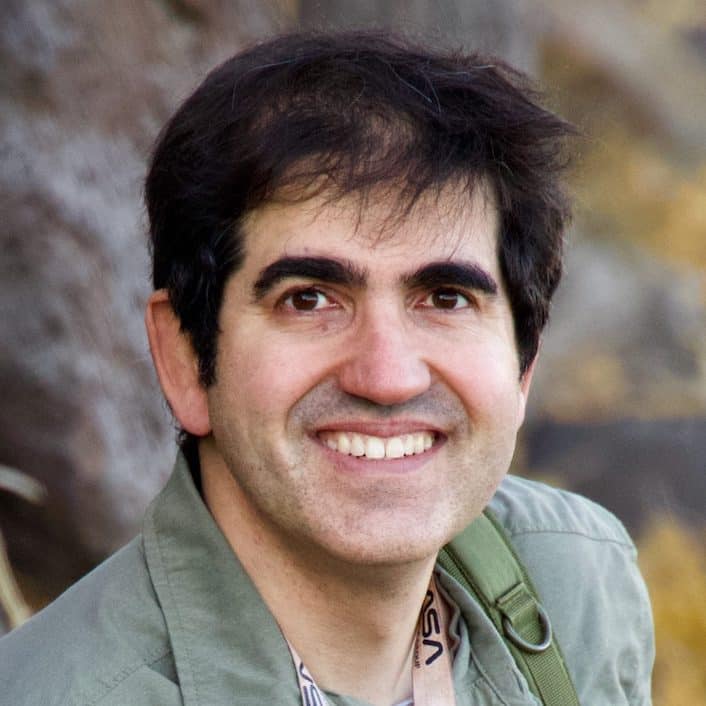 Evolution
Evolution
 Intelligent Design
Intelligent Design
Let’s Sing the Body Electric

At the head of the Introduction to Your Designed Body, Steve Laufmann quotes a line from Walt Whitman’s Leaves of Grass, “I sing the body electric.” In the stanza, Whitman expressed feeling spiritually electrified by the perfections of the human body. He didn’t realize at the time, as he thought and wrote, that his own body was literally electrified.
The emerging science of “bioelectricity” is opening new vistas into the electrical energy powering our nerves, organs, and tissues. What we are learning would be “totally unrecognizable” to the early pioneers of electrophysiology, Sara Adee writes in The Scientist:
Take a hard bite on the inside of your cheek. You’ll feel a tingling sensation. That tingling is the wound current, whose existence has frustrated and misdirected scientists since the 18th century. It intruded on Luigi Galvani’s seminal attempts to demonstrate the existence of animal electricity in frogs; it got in Emil du Bois-Reymond’s way as he tried to pin down the action potential in the 19th century. In 1843, du Bois-Reymond, whose famously obsessive approach to creating tools shaped the emerging science of electrophysiology, built his own galvanometer to measure this weird electrical interloper. Painstakingly created from at least a mile of coiled wire, the device revealed that leaking out of a cut in his finger, alongside the blood, was about one microampere of electrical current. [Emphasis added.]
Nearly two centuries later, Adee continues, we are enlisting this “wound current” to fight “septic and chronic wounds and to speed the healing process for everything else.” But wound currents are just the start of an electrifying story.
The Skin Battery
I’ve written about the “electric cell” here and here, describing how electric currents in cell membranes transmit information through an “electric code.” I’ve also written about “water wires” and cable bacteria. Biologists have long known about the membrane potential of an individual cell, which measures about -70 millivolts, due to ionic separations. They have known that neurons transmit ionic voltages down their membranes. Now, recent discoveries are showing that we must expand our exploration of bioelectricity to the whole body.
But skin cells also have a resting potential. These cells are connected to one another by little doors called gap junctions, meaning epithelial tissue connects tightly to encapsulate our skin, rather like the membrane around the cell. And just as an individual cell has a voltage, so does this epithelial tissue as a whole. This is the skin battery.
Breaks in the resting potential of the skin, Adee says, signal the blood clotting cascade into action. The “short circuit” detected by the skin battery calls up keratinocytes and fibroblasts to patch up the damage. It also creates a “bioelectric field” that promotes cell division and proliferation. All the complex responses in blood clotting described in Chapter 13 of Your Designed Body are therefore triggered by electricity, like the alarm bell in a fire station. Just as a short circuit can trigger a bell, a break in the skin battery’s circuit triggers an alarm that is heard around the body, calling up the first responders.
Electric Muscles
A paper in PNAS mentions in passing that the giant protein titin works using electricity. Something must have enough energy to make the “dramatic change” in its connections between titin proteins and sarcomeres:
Indeed, original in vitro experiments show that the PEVK poly-E motif, which has the largest actin affinity, is concentrated in the proximal and middle region of the PEVK segment and could be the source of multiple links, as required to resist forces comparable to T0,c. However, the dependence of the actin affinity of skeletal muscle titin on ionic strength indicates that the interaction is primarily electrostatic and whether under physiological conditions the affinity is strong enough remains to be established in future work.
The alternative mechaism of a Ca2+-dependent stiffening of the whole I-band titin per se appears inadequate to explain the large and SL-independent stiffness of the I-band titin of the active fiber, unless an unknown dramatic change in the properties of the tandem Ig segment was able to adapt the I-band titin contour length to match the I-band length at any SL in the physiological range.
This implies that our muscular activity is dependent on electricity. The titin protein acts as a rectifier:
The property of presenting a quite different resistance depending on the direction of the effort is termed rectification. This property, popular for the electric systems, in which the rectifying element is a diode, is investigated here in a mechanical system, the active half-sarcomere, in which the rectifying element is identified with the I-band titin. Changing the direction of the effort (voltage in the electric analog, force in the mechanical analog) the resistance offered by the rectifier changes so that the resulting flow (current in the electrical analog, velocity in the mechanical analog) changes by orders of magnitude. This is just how I-band titin behaves in the active half-sarcomere.
Electric Bacteria
Another example of bioelectricity comes from the University of Warwick:
Like the neurons firing in human brains, bacteria use electricity to communicate and respond to environmental cues. Now, researchers have discovered a way to control this electrical signalling in bacteria, to better understand resistance to antibiotics.
Scientists at the university are finding ways to trigger the bacterial electrical responses with light. They might be able to exploit bacterial hybrids to perform useful tasks, like drug delivery.
Here’s a stunning new example of bioelectricity discovered at Monash University: “Newly discovered enzyme that turns air into electricity.” What? Really?
Australian scientists have discovered an enzyme that converts air into energy. The finding, published today in the journal Nature, reveals that this enzyme uses the low amounts of the hydrogen in the atmosphere to create an electrical current. This finding opens the way to create devices that literally make energy from thin air.
The research team, led by Dr. Rhys Grinter, Ph.D. student Ashleigh Kropp, and Professor Chris Greening from the Monash University Biomedicine Discovery Institute in Melbourne, Australia, produced and analyzed a hydrogen-consuming enzyme from a common soil bacterium.
They named this amazing enzyme Huc. Scientists have long known that some microbes can use hydrogen for metabolism, but Huc is special. It is a “natural battery,” the researchers claim, and it is extraordinarily efficient:
In this Nature paper, the researchers extracted the enzyme responsible for using atmospheric hydrogen from a bacterium called Mycobacterium smegmatis. They showed that this enzyme, called Huc, turns hydrogen gas into an electrical current. Dr. Grinter notes, “Huc is extraordinarily efficient. Unlike all other known enzymes and chemical catalysts, it even consumes hydrogen below atmospheric levels — as little as 0.00005% of the air we breathe.”
Get a Charge of That!
Bioelectricity: design researchers can think about a whole new realm to explore, the role of electrostatic and electrodynamic physics involved in the functions of life. It’s involved in signaling. It’s involved in metabolism. It’s involved in locomotion. Where else is electricity helping operate living things? Perhaps we haven’t thought about it sufficiently since we obviously don’t short out when diving into a swimming pool. But it’s real. These reports show that the future is bright for bioelectrical research, and probably for bioelectrical engineering, too.

